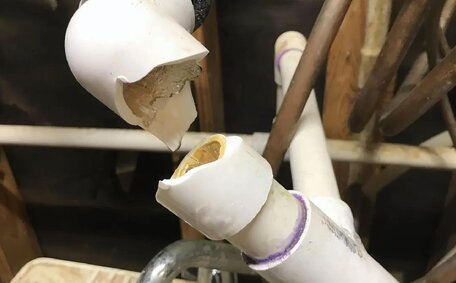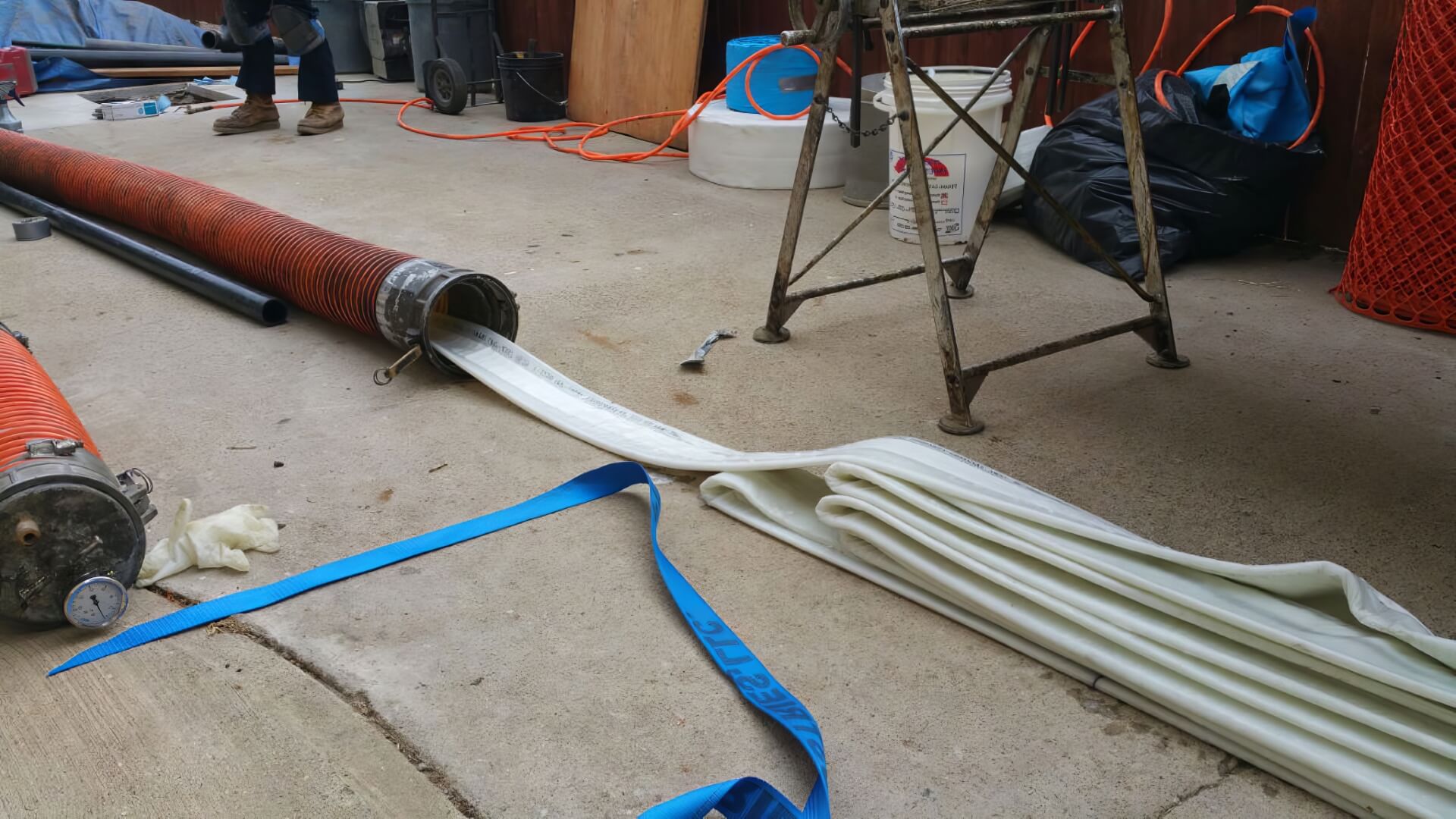How soil erosion and sediment contribute to blocked drains
Soil erosion occurs when soil particles are displaced and transported by wind or water. Common causes include heavy rains, flooding, construction activities, and vegetation removal. This leads to loose sediment washing into streets, gutters, and storm drains.
Sediment buildup eventually flows into drainage systems, and waterways can suffer from the concomitant blockages of pipes and infrastructure over time. Major sources of sediment pollution in the Castle Hill area include:
- City dust and debris from roads and sidewalks
- Microplastics from tyres and synthetic materials
- Runoff from construction sites carrying loose soil
Excess sediment harms local waterways by disrupting oxygen levels and light penetration needed for aquatic life. Mitigating erosion is crucial for ecological health and maintaining functionality of urban drainage networks through methods like silt fences, stabilisation structures, and stormwater treatment.
Common areas prone to sediment blockages
Areas prone to blocked drains from sediment buildup in Castle Hill include:
- Driveways and parking lots where oil drips and tyre debris accumulate
- Landscaped zones with loose topsoil that gets washed into drains
- Construction sites with exposed earth that erodes into drainage systems
- Low-lying areas and culverts along floodplains
Sediment enters drains most readily when rains are heavy, transporting debris into gutters and pipes before it gets washed away. Over time, the gradual accumulation of silt, soil, and particulates causes major blockages.
Other problematic areas include hillsides where runoff erosion is common and locations with poor drainage infrastructure. Ensure drains near landscaping or construction projects have protective filters installed to catch sediment before it leads to clogged plumbing.
Preventative measures for sediment blockages
Stopping sediment pollution at the source is key for preventing related blockages. Some effective preventative measures include:
- Establishing groundcover vegetation and erosion control barriers to stabilise exposed soil vulnerable to water transport
- Installing rock filters, sediment fences, or flocculation controls at construction site boundaries to capture runoff particulate
- Building stormwater detention basins to allow sediment to settle before entering drainage systems
- Using permeable pavement, rain gardens, and vegetated swales to increase stormwater filtration
- Conducting regular street sweeping, drain inspections, and maintenance to remove accumulated debris
- Educating local developers and homeowners on sediment management best practises to prevent erosion issues
Silt sock filters attached to drain openings can catch heavier particulates, while grate baskets and insert filters help filter water directly entering the system. Ensure any sediment controls are regularly emptied and cleaned after heavy rain to maintain functionality.
Following sediment control guidelines, stabilising disturbed soil, and incorporating protection features into drainage networks will help mitigate risks of blockages from construction activities, storms, and other runoff events.
Clearing blocked drains from soil and sediment
Loose soil and sediment often contribute to minor drain clogs that can potentially be cleared by the homeowner. However, caution should be exercised to avoid worsening the blockage.
Start by using a drain snake or plunger to loosen the clog over several attempts. Pouring hot water can also help break up semi-solid buildups. For sinks, remove the P-trap underneath to extract debris.
Pay special attention to flushing out fine sediment that tends to compact and adhere to pipe walls over time. Using a shop vacuum on both ends of the drain line can help draw out this silty material.
Avoid putting further strain on pipes by forcing objects past a stubborn clog. Chemical drain cleaners also risk further contamination so should be avoided.
If DIY efforts are unsuccessful after several tries, then professional hydrojetting or mechanical rodding is recommended. Continuing to pour water into an incomplete drain clearage may backfill soil sediment into untreated pipe sections.
Sediment-based blockages often indicate issues with erosion controls or drainage infrastructure vulnerabilities needing repair to prevent recurrence. Consult a licenced plumber to inspect your drains.
When to call a professional plumber
It’s time to call Castle Hill Plumbing on 1300 349 338 or email jobs@plumberscastlehill.com.au if you experience any of the following:
- Failed attempts at clearing sediment clogs through DIY methods
- Slow-draining water or gurgling sounds coming from pipes
- Standing water pooling around drains outside after storms
- Strong sewage odours coming from drains or sinks
- Multiple drains clogged at once throughout your property
Our licenced plumbers have the dedicated equipment and expertise to fully clear blocked drains while preventing further infrastructure damage or contamination. We can inspect the underlying issue and advise on necessary repairs if erosion controls or drainage vulnerabilities are contributing to recurrent clogs.
Sediment-based blockages often require thorough hydrojetting, rodding, or line clearing that is most effective and safe when performed by a professional. Don’t hesitate to call Castle Hill Plumbing if your drains display signs of persistent sediment buildup or you’ve exhausted DIY options.
With preventative maintenance checks and proactive sediment control measures, we can help reduce future occurrences and preserve the long-term functionality of your drainage infrastructure against siltation risks.
Environmental impact of sediment pollution
Excess sediment washing into waterways can cause disastrous impacts on local ecosystems beyond just clogging urban drainage systems. Suspended particulate shades out light needed for aquatic plants while also smothering riverbeds and lake floors that provide crucial habitats.
The influx of nutrients found in soil runoff can trigger algal blooms that rapidly deplete dissolved oxygen levels. Studies show a doubling of erosion rates into reservoirs causes a 15-30% increase in algae.
Sediments act as carriers for other pollutants like heavy metals, pesticides, and fertilisers that get absorbed onto particle surfaces before releasing toxins into water bodies.
Native fish, invertebrates, and amphibians sensitive to contamination and siltation suffer immense losses from sediment pollution through disruption of breeding habitats and food supply chains.
Proactively protecting topsoil structure, minimising erosion with cover crops and stabilisation structures, and filtering runoff before drainage entry will help mitigate ecological damage while preventing pipe blockages or treatment plant overload.
Comprehensive watershed management balancing flood control, supply storage, and sustainability factors is key to addressing large-scale sedimentation issues.
Innovations in sediment management
New technologies are enhancing sediment control and drain preservation in urban environments like Castle Hill:
- Smart silt fences with cloud-based monitoring automatically detect breaches and erosion spikes at construction sites.
- Hydrodynamic separators and vortex treatment systems use swirl concentration and gravitational settling to screen sediment loads from stormwater.
- Real-time water quality analyzers identify contamination risks and trigger automated samplers to help track pollution sources.
- Permeable reactive barriers filled with treatment media can absorb and neutralise dissolved heavy metals and nutrients from sediment drainage.
- Robotic underground drain inspection provides detailed pipe damage and defect detection without disrupting business operations.
- Drainage design software models soil loss, streamflow velocities and structural vulnerabilities to optimise erosion control features.
These advanced solutions allow proactive rather than reactive approaches to balancing development needs with ecological protections. Sensor surveillance of drainage conditions, improved filtration of runoff contaminants, better infrastructure maintenance monitoring, and data-driven decision-making will be key to managing sediments in environmentally sustainable ways.
Importance of infrastructure protection
Implementing protective infrastructure is crucial for shielding drainage systems against sediment pollution across Castle Hill. Strategically placed controls that filter and divert erosion runoff before entry into storm drains can prevent capacities being overwhelmed.
Construction sites should install perimeter controls like silt fences and sediment traps to capture loose soil. Drain inlet filters and porous check dams will also catch debris from site runoff. Protecting the surrounding environment should be an integral priority for all new developments.
Silt sock barriers attached to street drain openings provide filtration zones allowing heavier particles to settle while still permitting water flow. Promoting the use of rainwater tanks, porous paving, and bioswales will reduce runoff velocity and increase absorption.
Ongoing maintenance checks and cleaning of drainage infrastructure ensures designed sediment controls remain effective over time. Areas with recorded erosion issues may need enhanced protections like stabilising structures and hydroseeding to re-establish drained soil.
Silt buildup not only risks blockages but also wider contamination when sediment-absorbed metals, oils and chemicals enter waterways. By consciously building sediment defences into council infrastructure upgrades and subdivision works, pollution and functionality impacts can be sustainably managed.
Consistent maintenance for water quality
Maintaining drainage systems through regular inspection and cleaning is vital for preserving water quality against sediment pollution risks. Both residential homeowners and commercial property managers in Castle Hill need ongoing maintenance plans to capture debris before major blockages occur.
Key tasks involve checking and clearing guttering, drain covers, side entry pits and any filtration devices after heavy rainfall or extended dry periods where debris accumulates. Any sediment control barriers like filter socks should be emptied and cleared of compacted particulate.
Using CCTV drain inspections on a 6 to 12 month schedule provides internal visibility to assess sediment buildup and other defect issues requiring repair. More frequent maintenance helps limit material adhesion and obstruction inside pipes over the long term.
For commercial sites, environmental management plans should designate sediment control zones, list required infrastructure, outline inspection routines and define responsibility for remediating any issues identified.
Property owners can request council street sweepers to regularly clear adjacent roads where urban dust and grit wash into street side drains. Avoid hosing debris further downlines.
By consciously incorporating sediment management into standard property maintenance routines, the urban drainage networks of Castle Hill can preserve both functionality and water quality for the future. Contact qualified plumbers like Castle Hill Plumbing on 1300 349 338 for any required assistance maintaining your systems.






